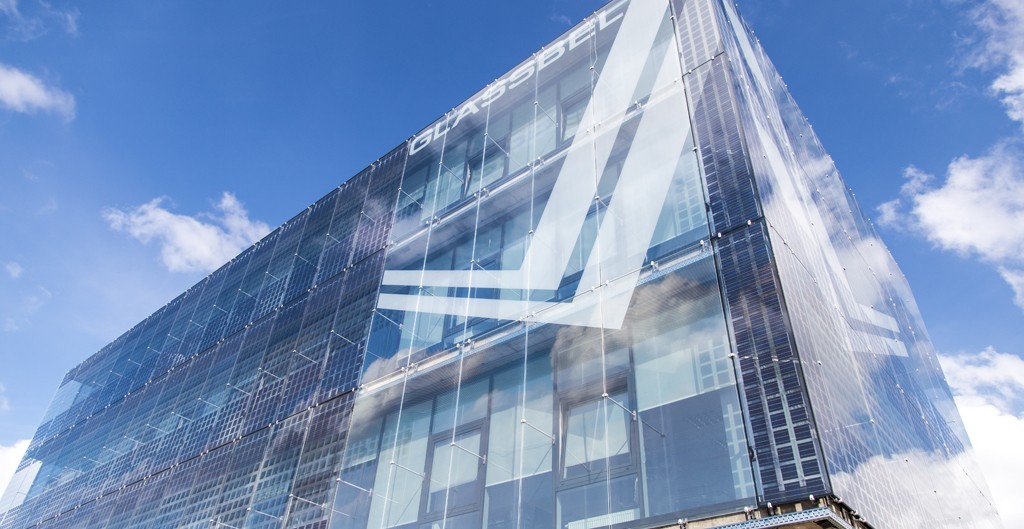BIPV: Turning buildings into power stations
By EPR Magazine Editorial July 13, 2017 2:03 pm IST
By EPR Magazine Editorial July 13, 2017 2:03 pm IST

BIPV is used in various parts of buildings such as roofs, facades, glazing and skylights for converting solar radiation into electricity.
Building-integrated photovoltaic (BIPV) is used as a substitute for conventional building materials to integrate solar energy with building designs. Of late installation of BIPV is gaining momentum as it enables cost-effective generation of electricity among utilities, which boosts the overall revenue of the end-user.
“Buildings today are the leading consumer of energy, mainly due to the lighting followed by heating or cooling. BIPV brings a unique opportunity to generate clean energy at the point of consumption along with other green benefits. It has provided new horizon of innovation for the diverse landscapes of energy material science and architectural design,” said Karan Shah, Founder & Director, Cosmic Grey LLP.
As per an analysis by research firm Technavio, the global BIPV skylights market is expected to grow at a CAGR of 10.16 per cent during the period 2017-2021 whereas a report by Research and Markets states that global market for BIPV technologies will grow from $2.4 billion in 2016 to $4.3 billion by 2021. “With the Indian government pushing solar awareness to heights, domestic BIPV market is likely to grow at a faster pace than our Western counterparts,” Shah adds.
According to Ashish Khanna, Executive Director and CEO, Tata Power Solar, “BIPV segment gives dual benefits to the office buildings by reducing heat and providing solar power. It has great potential to transform urban energy management, utilising a fraction of the real estate which is at a premium in cities. Also, the panels provide shadowing benefits to the building that reduces the energy required for cooling a building.”
Explaining the advantages of BIPV, Shah said, “BIPV solar panels may cost 30-40 per cent more than glass panels. But over the years this cost will be recovered, as these panels will also generate power for the structure. Roofing systems are likely to see maximum expansion whereas the facade shall demand maximum innovation.”
Pain points
Highlighting the pain points of installing BIPV, Khanna said, “BIPV are very complex project as the solar farms are required to be integrated on the façade of the building without compromising on the aesthetics. Besides constructing complex scaffolding, safety is of utmost importance for workers working on a vertical structure. It requires significant innovation and customisation of the structures, load bearing characteristics and anchorage.”
Tata Power Solar’s BIPV installation for Dell International Services India Pvt Ltd at their Bengaluru campus provides the dual benefit of producing sustainable green energy and insulation of the building, thus helping reduce power consumption. The solar farm was targeted to produces enough energy to light-up Dell’s entire cafeteria and basement parking. While this significantly reduced the energy consumption of building, the panels itself acted as solar insulation by blocking the south sun and thus reducing the power consumption of the air-conditioning. Tata Power Solar has integrated 480 modules, manufactured by them, on 11-storeyed building wall. For optimised plant performance, the company has designed the vertical structure with a 30-degree moving tilt to better enable maintenance.
Tata Power Solar also worked with FESTO to power the office premises with solar energy and reduce the usage of energy for cooling the building during summers. Specially made stainless steel structures were used on the south facing façade of the building to mount the panels, thus protecting the building from direct sunlight. The structures were fitted at the time of building construction, with support from design consultants, to ensure the aesthetic design requirements were met as well as making the building picturesque.
Cosmic Grey is an innovation driven company with strong design and execution capabilities. “Bespoke solution coupled with futuristic design technology and reliability has earned us project across all the metros and several accolades. Innovative financial inclusion models have brought cost efficiency to our clients making BIPV more profitable than any glass façade,” claims Shah.
We use cookies to personalize your experience. By continuing to visit this website you agree to our Terms & Conditions, Privacy Policy and Cookie Policy.